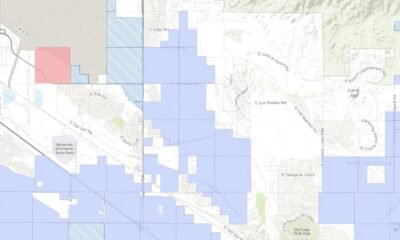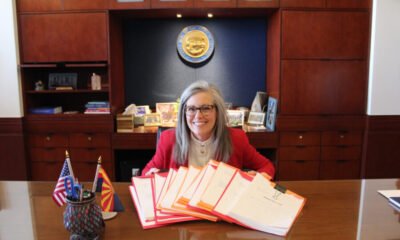Arizona Department of Housing
Maricopa Faces Surging Homelessness Crisis: Key Insights Revealed

On July 6, 2024, Gary Groh volunteered at the Maricopa Food Pantry. This engagement has helped him find mental reprieve and self-worth as he transitions out of homelessness.
Groh, a 62-year-old Phoenix native, can’t remember how he became homeless. “This one guy let me live in the back of his auto shop and one day asked, ‘Hey, why are you homeless anyway?'” Groh said. “I’m like, ‘If I could put a finger on that, I could probably reverse engineer it.’” His journey into homelessness began three decades ago after a devastating divorce. The first place he slept outside was a park behind Grand Canyon University, a place he’d frequented as a child.
For the next 19 years, Groh moved from place to place, unable to secure housing due to bad credit. He lived under bridges, along canals, and anywhere he could find shelter in metro Phoenix.
Groh’s experience is not unique. The National Alliance to End Homelessness reports that the number of Americans experiencing homelessness reached a record high of 421,000 last year. The increase has been 6% over the last seven years nationally, but in Arizona, the numbers are even more alarming. More than 13,500 people reported experiencing homelessness in 2022 in Arizona, with over 9,000 in metro Phoenix alone. While Maricopa does not track homeless data, estimates suggested 219 people experienced homelessness in the area last year, a 332% increase since 2017.
Most of these individuals cited job loss, low income, legal issues, and traumatic family events as contributing factors to their homelessness. Mental health issues and substance abuse further complicate these situations.
Groh found himself caught in a cycle of homelessness, exacerbated by trauma, poor financial choices, and substance abuse. For him, the shift began in 2014 when he received assistance with his health and housing. Moving to Maricopa, he continued this transition with the help of the Maricopa Food Pantry, where he and his girlfriend Jessica volunteer. This engagement has provided them both with a sense of purpose and self-worth.
“If somebody can find something that gives themselves value, that makes everything easier,” Groh said. He likens the recovery process to filling up a hole: “First, you need to stop digging. You need to get rid of your shovels, get away from anybody else that has those shovels, and then find people with dirt to start filling that hole back up until you get to the surface.”
Jim Shoaf, the founder and CEO of Maricopa Pantry, emphasized the importance of offering a “hand-up” rather than a handout. “Nobody needs a handout; they need to be lifted up and given a hand-up,” Shoaf said.
Homelessness in Maricopa presents differently from larger cities like Phoenix. The city lacks the large encampments seen in places like “The Zone” in downtown Phoenix. Instead, the homeless population in Maricopa is more mobile and less visible, with many individuals couch-surfing or living in their cars.
It’s not only adults facing homelessness; Maricopa Unified School District identified 97 students as homeless during the last school year. The assistant superintendent, Nancy Diab-Scott, noted that most of these cases are due to changing family dynamics, such as job loss or divorce. The lack of affordable housing also forces many families to share housing, contributing to the rise in student homelessness.
Unaccompanied homeless youth have increased by 83% in four years, highlighting the vulnerability of young people fleeing abusive environments or aging out of foster care. Efforts under the McKinney-Vento Homeless Assistance Act aim to support these students by providing meals, clothing, hygiene items, school supplies, and access to community resources.
Amber Liermann, Maricopa Vice Mayor and Maricopa High School counselor, emphasized the need for a support system for homeless youth. “Survival behaviors put them at risk for making bad decisions because they’re in a bad situation,” she said. The goal is to ensure these students know where they will sleep, eat, and find reliable support.
One senior high school student, John, found himself homeless after escaping an abusive home. He spent months couch-surfing and working nights to survive, struggling with feelings of being unloved and encountering suicidal tendencies. Support from friends and his school counselor helped him graduate high school despite his challenging circumstances.
“I hope to live just a regular life like any other person on this planet,” John said. “I hope to own a home, even if it’s a crappy home. I hope to have a car, and I hope to have a job. And I hope to be alive.”
Despite Maricopa’s median household income of $88,000, many residents have encountered homelessness, proving it’s a pressing issue even in affluent communities.


















